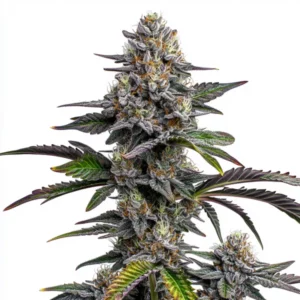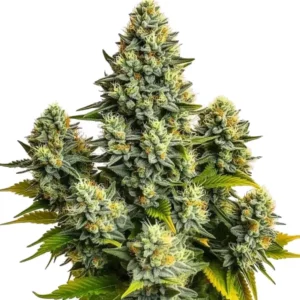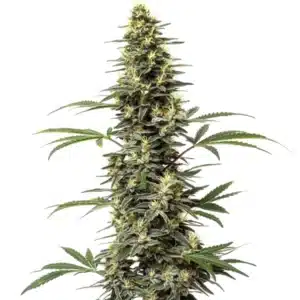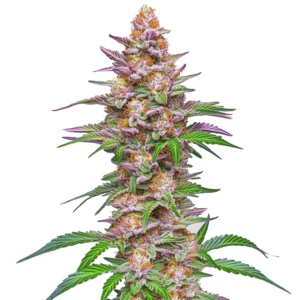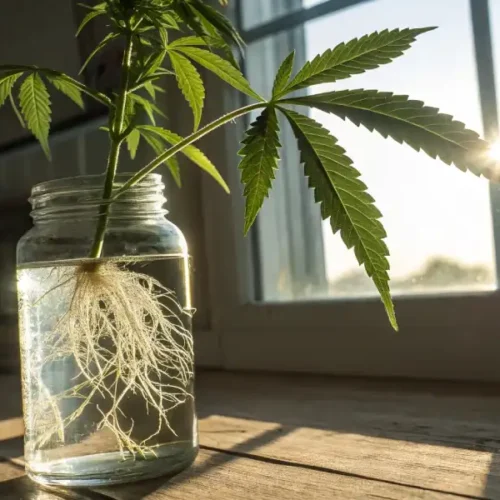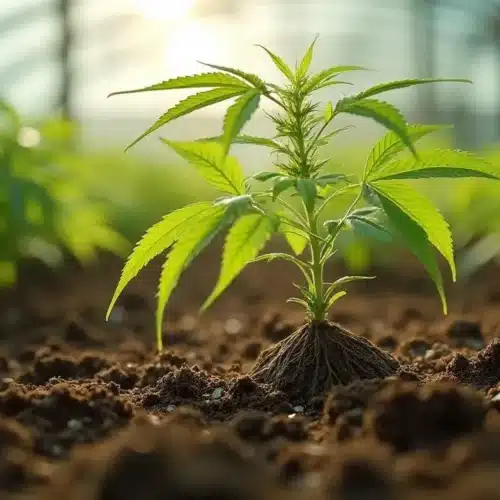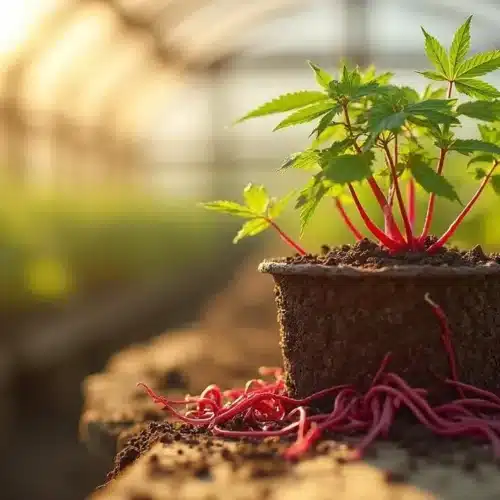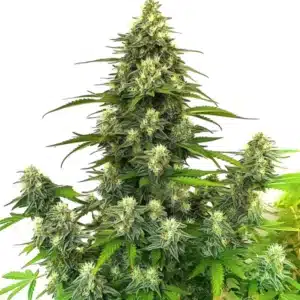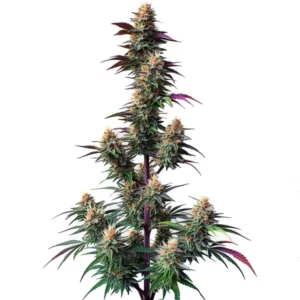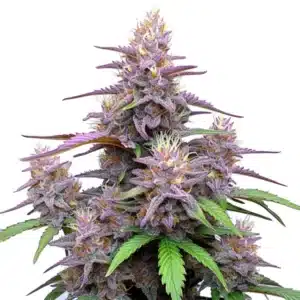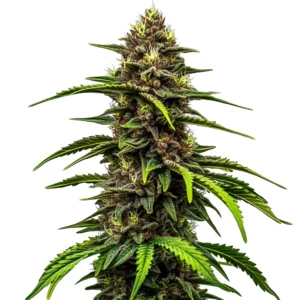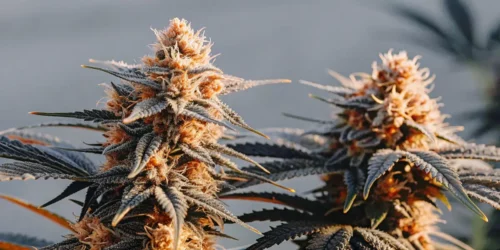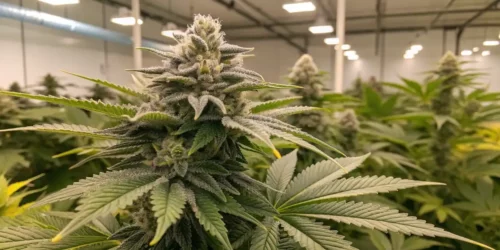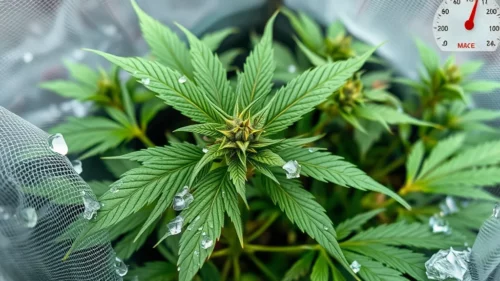When it comes to cultivating cannabis, particularly autoflowering varieties, one of the most frequent inquiries is, “Is it safe to put autoflowers outside?” Autoflowering cannabis plants are known for their resilience and convenience. However, growing them outdoors introduces various factors that can enhance or hinder their growth. This manual covers everything you need to know about growing autoflowers outdoors, from their unique characteristics to the advantages and challenges of outdoor cultivation.
Knowing the Basics of Growing Autoflowers Outdoors
What Makes Autoflowers Different from Regular Cannabis Plants?
Is it safe to put autoflowers outside? To answer this, it’s basic to know what sets autoflowering cannabis apart from regular photoperiod strains. Autoflowers flower based on age rather than light cycles, making them unique. This trait allows them to transition from the vegetative stage to flowering in as little as 2-4 weeks, with the entire lifecycle often completed in 8-12 weeks. This rapid growth cycle benefits outdoor growers aiming to maximize yield within a limited season.
Unlike photoperiod plants, which need specific light conditions to trigger flowering, autoflowers are not dependent on light changes. This independence makes them versatile for outdoor cultivation. They can flower under various lighting conditions, including the inconsistent light of early spring or late fall. This trait also makes autoflowers ideal for growers in regions with shorter growing seasons or unpredictable weather patterns.
Autoflowers are generally smaller and more compact, which can be an advantage and a challenge outdoors. Their smaller size makes them less conspicuous, ideal for those needing a discreet outdoor grow. However, their size also means fewer buds compared to larger photoperiod plants. Still, growing multiple autoflower crops in one season can compensate, leading to a bountiful yield.
The Advantages of Growing Autoflowers Outside
One primary consideration when asking, “Is it safe to put autoflowers outside?” is the potential benefits of outdoor cultivation. Growing autoflowers outdoors offers several advantages that can enhance your cultivation experience.
Natural sunlight is one of the most significant benefits. Sunlight provides a full spectrum of light, difficult to replicate with artificial indoor lighting. This light promotes robust plant growth and enhances the terpene profile, resulting in buds that are more aromatic and flavorful. The full spectrum of natural light contributes to complex terpene profiles, leading to a richer smoking experience.
Another advantage of growing autoflowers outdoors is the natural environment. The outdoor setting provides fresh air, natural rainwater, and beneficial organisms in the soil, contributing to healthier plants. Earthworms and other soil organisms help aerate the soil and break down organic matter, making nutrients more available to your plants. Outdoor growing also reduces the need for artificial lighting, ventilation, and humidity control, lowering your overall costs and environmental footprint.
Moreover, outdoor growing allows for more space. Unlike indoor setups, where space is limited, the outdoors offers the freedom to grow more plants in larger plots. This increased space can lead to higher yields, especially when you grow multiple cycles of autoflowers throughout the season. Growing more plants also provides a safety net, as a few underperforming plants are less likely to impact your total yield significantly.
Misconceptions About Outdoor Autoflowering Cannabis
When growers ask, “Is it safe to put autoflowers outside?” they often encounter misconceptions that lead to unnecessary worry. One common misconception is that autoflowers are too fragile to thrive outdoors. While it’s true that autoflowers have a shorter lifecycle, which leaves less time for recovery from stress, they are generally hardy plants. Many autoflowering strains are bred for their resilience, making them well-suited for unpredictable outdoor environments.
Another misconception is that autoflowers don’t yield as much as photoperiod strains. Although autoflowers are typically smaller and produce fewer buds per plant, their rapid growth cycle allows for multiple harvests in a single season. This can often result in a total yield that matches or even exceeds that of a single crop of photoperiod plants. Advances in breeding have also led to autoflowering strains that are as potent and flavorful as their photoperiod counterparts, debunking the myth that autoflowers are inferior in quality.
A further misconception is that autoflowers cannot be as flavorful or potent as photoperiod plants. Modern breeding techniques have produced autoflowering strains with high THC levels, complex terpene profiles, and rich flavors that rival traditional photoperiod strains. Whether you’re growing for personal use or a larger harvest, autoflowers can provide a high-quality product when grown under the right conditions.
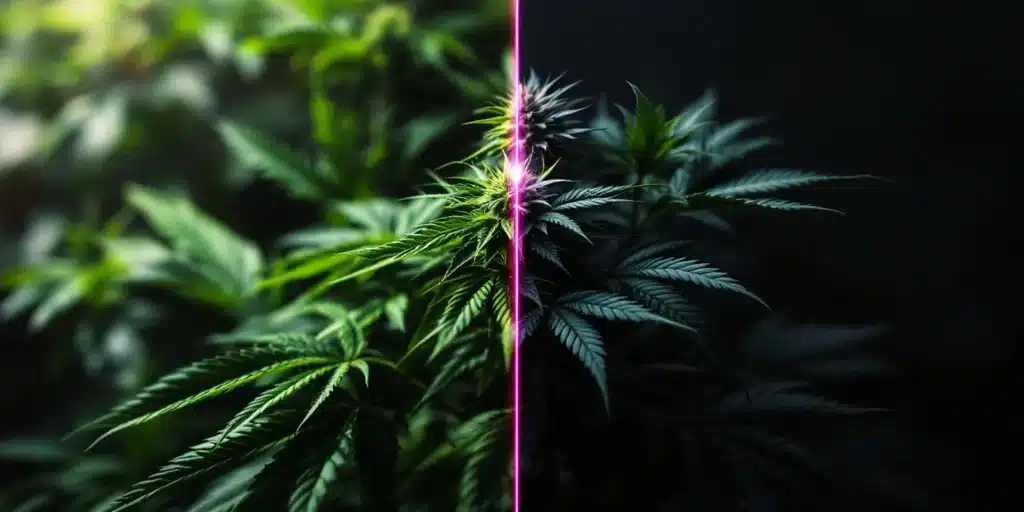
Promos & Deals
Factors to Consider Before Putting Autoflowers Outside
Climate and Weather Conditions: What You Need to Know
When considering if it is safe to put autoflowers outside, one of the most critical factors is your local climate and weather conditions. Autoflowers are more tolerant of environmental stressors than photoperiod strains, but they still need a stable environment to thrive. Knowing your local climate helps determine the best planting time and how to protect your plants from weather-related threats.
Temperature plays a significant function in autoflowers’ growth and development. These plants thrive in a daytime temperature range of 70-85°F (21-29°C) and nighttime temperatures that do not drop below 50°F (10°C). Extreme temperatures, whether too hot or too cold, can stunt growth, reduce yields, or cause your plants to hermaphrodite a condition where the plant produces both male and female flowers, leading to self-pollination and reduced bud quality.
Rainfall and humidity are also important when asking, “Is it safe to put autoflowers outside?” While autoflowers can handle some rain, excessive moisture can lead to mold, mildew, and root rot. This is especially true during the flowering stage when dense buds are more susceptible to fungal infections. If you live in a region with high rainfall or humidity, take extra precautions, such as providing cover or choosing a strain resistant to mold and mildew.
Wind is another environmental factor to consider. While a gentle breeze strengthens plant stems and improves airflow, strong winds can damage your plants, especially when they are young and less established. Wind can also dry out the soil quickly, increasing water needs. If you live in a windy area, consider planting your autoflowers in a sheltered location or using windbreaks, such as fencing or tall vegetation, to protect them.
Soil Quality and Preparation for Outdoor Autoflowers
Is it safe to put autoflowers outside if your soil quality is not ideal? The answer depends on your ability to improve and manage the soil in your growing area. Autoflowers prefer well-draining soil with a slightly acidic pH between 6.0 and 7.0. If your native soil is heavy, clay-like, or lacking in nutrients, you’ll need to amend it with organic matter, such as compost, peat moss, or aged manure, to improve its structure and fertility.
Before planting your autoflowers, test the pH and nutrient levels of your soil. Use a simple soil test kit, available at most garden centers, to determine if any adjustments are needed. If your soil is too acidic or alkaline, amend it with lime or sulfur to bring the pH into the optimal range for cannabis growth. Enriching the soil with organic fertilizers, such as worm castings, bone meal, or kelp meal, can provide the nutrients your plants need to thrive.
Proper drainage is also important. Autoflowers are sensitive to overwatering, which can lead to root rot and other problems. If your soil retains too much moisture, add perlite, vermiculite, or sand to improve drainage. Raised beds or mounds can also help prevent waterlogging by allowing excess water to drain away from the root zone.
Choosing the Right Location for Your Outdoor Grow
One of the most critical factors in determining if it is safe to put autoflowers outside is the growing location. The right spot can significantly affect your plants’ health and yield. Ideally, your location should receive at least 6-8 hours of direct sunlight per day. Sunlight is important for photosynthesis, driving the growth and development of your autoflowers.
In addition to sunlight, consider the level of privacy and security the location offers. While autoflowers are smaller and less conspicuous than photoperiod plants, they still need protection from prying eyes and potential thieves. If privacy is a concern, plant near taller vegetation, use natural barriers like shrubs or fences, or grow in containers that can be moved to more discreet locations.
Accessibility is another important consideration. Your plants will need regular watering, especially during dry spells, so a convenient water source nearby is essential. If you’re growing in an area where water is scarce, consider using drip irrigation systems or mulch to conserve moisture. Additionally, consider the convenience of accessing your plants for routine maintenance, such as pruning, pest control, and harvesting.
Protecting Your Autoflowers from Outdoor Threats
How to Safeguard Your Plants from Pests and Diseases
Is it safe to put autoflowers outside if pests and diseases are a concern? The answer is yes, but proactive measures must be taken to protect your plants. Pests like aphids, spider mites, caterpillars, and other insects can cause significant damage if not managed properly. Similarly, diseases such as powdery mildew, botrytis (bud rot), and root rot can quickly spread and ruin your crop if left unchecked.
One of the best ways to safeguard your plants is by implementing an integrated pest management (IPM) approach. This strategy involves using a combination of techniques to prevent and control pests. For instance, introducing beneficial insects like ladybugs and predatory mites can help keep harmful pests in check. Regularly inspecting your plants for signs of pests or disease allows you to catch problems early before they spread.
Using organic pesticides and fungicides is another effective method for protecting your outdoor autoflowers. Products like neem oil, insecticidal soap, and sulfur-based fungicides are effective against a wide range of pests and diseases. However, use these products sparingly and according to the manufacturer’s instructions to avoid damaging your plants or harming beneficial organisms.
Dealing with Harsh Weather: Wind, Rain, and Extreme Temperatures
One of the key considerations when deciding if it is safe to put autoflowers outside is how to protect them from harsh weather conditions. While outdoor growing exposes your plants to the natural elements, which can be beneficial, it also presents risks such as strong winds, heavy rain, and extreme temperatures.
To protect your plants from wind damage, consider using stakes, cages, or trellises to support them as they grow. This is particularly important for autoflowers, which can be top-heavy due to their dense buds. Placing your plants in a sheltered location, such as near a fence or hedge, can also help reduce the impact of strong winds.
Heavy rain can be detrimental to autoflowers, especially during the flowering stage when the buds are most vulnerable to mold and mildew. If you live in an area prone to heavy rainfall, consider using a temporary shelter, such as a tarp or greenhouse, to keep your plants dry. Ensure that the shelter allows for adequate airflow to prevent moisture buildup, which can lead to fungal infections.
Extreme temperatures, whether hot or cold, can also stress your plants and reduce their growth. In hot climates, consider using shade cloths to protect your plants from intense midday sun, and provide extra water to keep them hydrated. In colder climates, using frost cloths or bringing your plants indoors during cold snaps can help prevent frost damage and keep your plants healthy.
Preventing Theft and Animal Interference in Your Outdoor Garden
When growers ask, “Is it safe to put autoflowers outside?” they often worry about the risk of theft and damage from animals. While outdoor growing can expose your plants to these risks, there are several strategies you can employ to protect your crop.
To deter thieves, consider implementing security measures such as fencing, motion-activated lights, or even security cameras. These can serve as a strong deterrent to would-be thieves and provide peace of mind. Additionally, consider planting your autoflowers in less obvious locations or using companion plants to camouflage them and reduce their visibility.
Animals, including deer, rabbits, and rodents, can also pose a threat to your outdoor autoflowers. These animals are often attracted to the smell of cannabis and can cause significant damage if they gain access to your plants. To protect your crop, consider using physical barriers such as chicken wire or mesh netting around your grow area. Natural deterrents, such as planting strong-smelling herbs like mint or rosemary, can also help keep animals at bay.

Best Practices for Growing Autoflowers Outside
Watering and Nutrient Requirements for Outdoor Autoflowers
Is it safe to put autoflowers outside without proper watering and nutrient management? The success of your outdoor grow largely depends on meeting the specific needs of your plants in terms of water and nutrients. Since autoflowers have a shorter lifecycle than photoperiod plants, they require consistent care to reach their full potential.
Watering is one of the most critical aspects of outdoor growing. Autoflowers need a balance between keeping the soil moist and avoiding waterlogging, which can lead to root rot and other problems. A good rule of thumb is to water your plants when the top inch of soil feels dry to the touch. During hot, dry weather, you may need to water more frequently, but be mindful not to drown your plants. Mulching around your plants can help retain moisture and reduce the frequency of watering.
In terms of nutrients, autoflowers generally require a different feeding schedule compared to photoperiod plants. They benefit from a higher concentration of nitrogen during the vegetative stage, which supports rapid growth. As the plants transition to flowering, they will need more phosphorus and potassium to support bud development. Using a balanced, organic fertilizer that provides all the necessary nutrients can help ensure healthy, vigorous growth.
Regularly testing the pH of your soil and water is also important, as autoflowers are sensitive to pH imbalances. Aim for a pH range of 6.0 to 7.0 to ensure optimal nutrient uptake. If your pH is outside this range, you can adjust it using pH up or down products. Monitoring your plants for signs of nutrient deficiencies, such as yellowing leaves or stunted growth, will also help you address any issues promptly.
Light Management: Maximizing Sunlight Exposure
Light is a critical factor in the question, “Is it safe to put autoflowers outside?” Proper light management is essential to maximizing the growth and yield of your outdoor autoflowers. Sunlight is a key factor in the photosynthesis process, which drives the growth and development of your plants.
To maximize sunlight exposure, choose a location that receives at least 6-8 hours of direct sunlight per day. This is particularly important during the flowering stage when your plants need plenty of light to produce dense, resinous buds. If you’re growing in an area with limited sunlight, consider using reflective surfaces, such as white walls or reflective tarps, to bounce light onto your plants. You can also use light diffusers or shade cloths to protect your plants from intense midday sun, which can cause heat stress and sunburn.
Another aspect of light management is ensuring your plants receive consistent light exposure throughout the day. Autoflowers are not dependent on light cycles to flower, but they still benefit from a steady light schedule. Providing your plants with consistent light exposure can help optimize growth and ensure a successful harvest.
Harvesting Tips: When and How to Harvest Your Outdoor Autoflowers
Is it safe to put autoflowers outside until harvest time? Knowing when and how to harvest your outdoor autoflowers is important to maximizing their potency and yield. Since autoflowers have a predetermined lifecycle, timing your harvest correctly is essential.
The best way to determine when your plants are ready for harvest is by examining the trichomes, the tiny resin glands on the buds. Trichomes change color as the plant matures, starting out clear and gradually turning milky white or amber. When the majority of trichomes are milky white, your plants are at peak potency and ready for harvest. If you prefer a more relaxing effect, wait until some of the trichomes turn amber before harvesting.
To harvest your autoflowers, start by cutting the main stem at the base of the plant. Remove the larger fan leaves, which can be discarded or used for making edibles or extracts. Next, trim the smaller leaves around the buds, known as sugar leaves, which can also be used for making edibles. Finally, hang the trimmed buds upside down in a cool, dark, and well-ventilated space to dry.
Drying and curing your buds properly is essential to preserving their potency, flavor, and aroma. Once the buds are dry, store them in airtight containers in a cool, dark place. This curing process allows the cannabinoids and terpenes to develop fully, resulting in a smoother, more flavorful smoke.
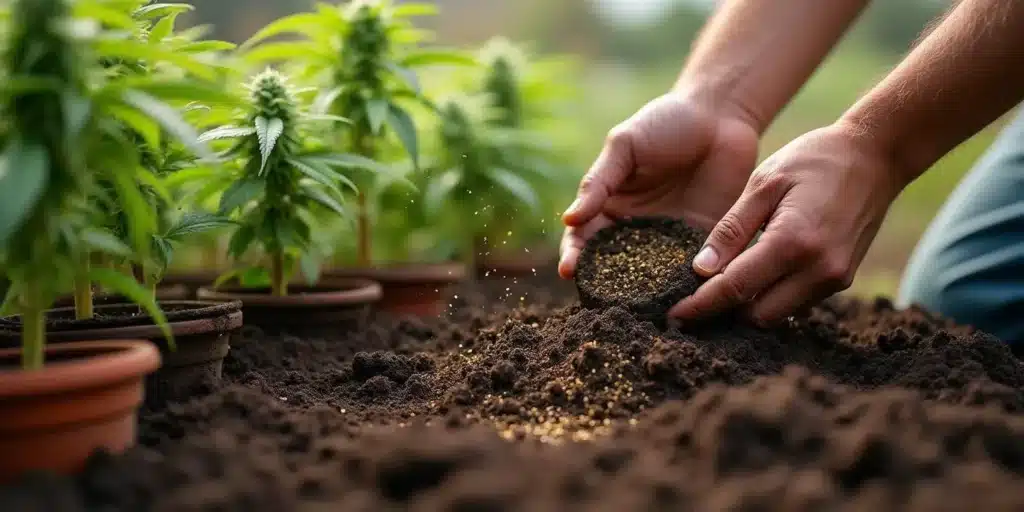
Frequently Asked Questions About Growing Autoflowers Outdoors
Can Autoflowers Thrive in Any Climate?
Is it safe to put autoflowers outside in any climate? One of the biggest advantages of autoflowers is their adaptability to different climates. While they can thrive in a wide range of conditions, certain climates are more favorable for outdoor cultivation. Autoflowers prefer temperate climates with mild temperatures and moderate humidity. However, they can also be grown successfully in colder or hotter climates with the right precautions.
In colder climates, it’s important to choose a hardy, fast-flowering strain and provide protection from frost. In hotter climates, consider using shade cloths or other forms of sun protection to prevent heat stress. Regardless of the climate, proper soil preparation, watering, and light management are key to a successful harvest.
What Are the Biggest Challenges of Growing Autoflowers Outside?
When asking, “Is it safe to put autoflowers outside?” it’s important to consider the unique challenges they face. One of the biggest challenges is their shorter lifecycle, which gives them less time to recover from stress or environmental factors. This means that any issues with pests, diseases, or nutrient deficiencies must be addressed quickly to avoid compromising the harvest.
Another challenge is managing the light exposure, especially in areas with limited sunlight. Since autoflowers rely on consistent light for optimal growth, finding a location that receives adequate sunlight is important. Finally, outdoor growing exposes your plants to the elements, so it’s important to be prepared for unexpected weather events and take steps to protect your plants from extreme conditions.
How to Ensure a Successful Outdoor Autoflower Harvest
Is it safe to put autoflowers outside and expect a successful harvest? Ensuring a successful outdoor autoflower harvest requires careful planning, attention to detail, and a proactive approach to problem-solving. Start by choosing the right strain for your climate and growing conditions. Preparing the soil and selecting the optimal location will set your plants up for success.
Throughout the growing season, monitor your plants closely for any signs of stress, pests, or disease. Address any issues promptly and adjust your care routine as needed. Consistent watering, nutrient management, and light exposure are key to healthy growth and high yields.
When it comes time to harvest, take care to do so at the right time and use proper drying and curing techniques to preserve the quality of your buds. By following these best practices, you can enjoy a bountiful harvest of potent, flavorful autoflowers grown right in your own backyard.

